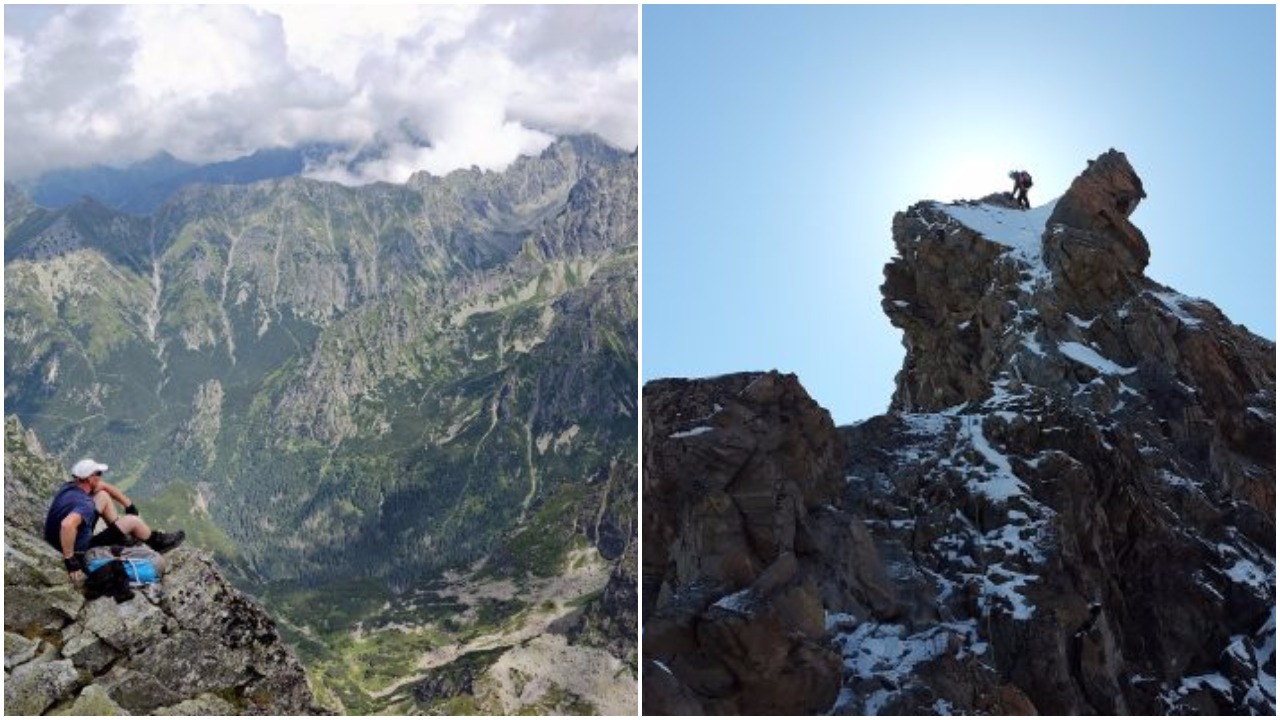Successfully climbing Aretes and avoiding falls

A sharp, vertical edge that simply juts out from the face of the cliff is known as an arete. These are not only an aesthetically pleasing feature of a rock face, but they often present highly challenging projects for even the most avid of climbers. Climbing an arete is usually a bolted climb since these features do not have adequate places strong enough to enable gear placement.
In order to successfully climb an arete, experienced climbers have to deploy some of their best climbing techniques and use their strength evenly to avoid any failures. Most aretes also lack any significant handholds and footholds, instead, there are numerous small edges for placing feet with tiny layback holds, friction slopers and pinches for hand grips.
Study your arete before climbing
Due to the scarcity of handholds, climbing an arete could be extremely pumpy and strenuous. It is always best to first make a detailed analysis of the route and any relevant features of the structure before actually attempting the climb. Lay out the plan in your head, visualizing the entire route and the likely grips that you would expect to use, and try various routes, choosing the best one with maximum handholds.
While planning your climb, remember that there are always two faces of an arete and that you can always switch in order to progress up the route.
Utilizing the rests for clipping stances

Strength is perhaps the major factor while climbing an arete, since the ascent is often deceptively hard, but you will also require a variety of different techniques. Unless you can find the best possible combination of strength and technical know-how, there is a real chance of a painful fall. Look out for any possible rest point such as jug handholds and good footholds.

Carrying on climbing without giving yourself enough rest and time, especially while clipping the chains, could prove to be disastrous. Make sure you study your body position while clipping the bolts into the rock.
Laybacking in Arete climbing

Laybacking is a technique in which a climber uses both his hands and feet to create a balance by laying back on one side while using the grip from hands and feet to give a steady rest. While attempting to climb aretes, climbers often use this technique due to the lack of availability of enough handholds and footholds. Laybacking, though it looks pretty straight forward, requires a strong grip, balance, technique, and overall composure, as it exposes a climber to a possibility that they never want to face, known as the barndoor effect.

Barndooring is the tendency to swing towards your hands and feet while attempting to layback. This creates a force that travels towards the grip, resulting in the hands losing their hold and breaking the hands-feet circle of force, and potentially causing a fall, ThoughtCo reported.
Hand and Foot placements
While attempting to layback on an arete, you must pay attention to your foot placements and handholds, as only when correctly planted and placed can the hands and feet support you well enough to result in a successful laybacking maneuver. Make sure your feet are planted as close to the edge of the arete as possible, so look for smears and edges for better footholds.

Feel the edges with your hands one by one and find small indentations on the opposite side of the edge to give you a firmer grip while laybacking. Look for the places where you can use pinch grips on the arete; if you find a thumb catch, use it as athumb catch will provide you with a strong enough grip while laybacking, minimizing the possibility of barndooring.
Counter Barndooring with face holds
Partial laybacking is also very common amongst many climbers when climbing aretes. Climbers tend not to use both hands and feet while laybacking on an area where they can see face holds nearby. In this situation climbers use one hand and foot for laybacking while getting stability by planting the other hand and foot on face holds on the opposite side, and so further reducing the chances of barndooring.
If you have any comments then please drop us a message on our Outdoor Revival Facebook page
If you have a good story to tell or blog let us know about it on our FB page, we’re also happy for article or review submissions, we’d love to hear from you.
We live in a beautiful world, get out there and enjoy it. Outdoor Revival – Reconnecting us all with the Outdoor
